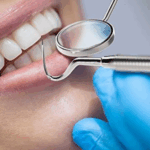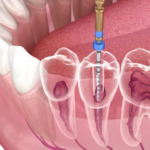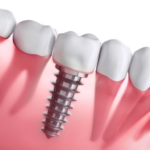
Hair loss is a widespread concern impacting countless individuals globally. This condition can be distressing, impacting self-esteem and quality of life. Fortunately, various treatments are available to address hair loss, including Platelet-Rich Plasma (PRP) therapy, medications like minoxidil and finasteride, hair transplant surgery, and low-level laser therapy. Each treatment has its advantages and disadvantages, making it essential to understand their differences to choose the most suitable option.
- PRP Therapy
Platelet-rich plasma (PRP) therapy is an innovative treatment that utilizes the patient’s blood to promote hair growth. The process involves drawing a small amount of blood, processing it to concentrate the platelets, and injecting the platelet-rich plasma into the scalp. These platelets release growth factors that stimulate hair follicles, encouraging new hair growth and thickening existing hair.
Advantages of PRP Therapy
- Natural Approach: PRP uses the patient’s blood, reducing the risk of allergic reactions or infections.
- Minimally Invasive: The procedure involves injections rather than surgery, resulting in minimal discomfort and downtime.
- Improvement in Hair Thickness: PRP therapy has shown promising results in increasing hair density and thickness.
Disadvantages of PRP Therapy
- Multiple Sessions Required: Optimal results often require several treatment sessions.
- Varied Results: Effectiveness can vary from person to person, with some experiencing significant improvement and others seeing minimal changes.
- Cost: PRP therapy can be expensive, especially considering the need for multiple sessions.
- Medications: Minoxidil and Finasteride
Minoxidil and finasteride are two of the most commonly used medications for hair loss.
Minoxidil is a topical solution applied directly to the scalp. It works by widening blood vessels, allowing more oxygen, blood, and nutrients to the hair follicles.
Finasteride is an oral medication that lowers the production of dihydrotestosterone (DHT), a hormone associated with hair loss.
Advantages of Medications
- Ease of Use: Minoxidil is applied topically, and finasteride is taken orally, making them convenient for daily use.
- Proven Effectiveness: Both medications have been clinically proven to slow hair loss and promote regrowth in many users.
- Accessibility: These medications are widely available and can be obtained with a prescription.
Disadvantages of Medications
- Side Effects: Finasteride can cause side effects such as sexual dysfunction, while minoxidil may cause scalp irritation.
- Continuous Use Required: The benefits of these medications are only maintained with continuous use; stopping treatment can result in resumed hair loss.
- Variable Results: Not all users experience the same level of effectiveness, with some seeing minimal improvement.
- Hair Transplant Surgery
Hair transplant surgery involves moving hair follicles from one part of the body (usually the back of the scalp) to thinning or balding areas. There are two primary techniques utilized: Follicular Unit Transplantation (FUT) and Follicular Unit Extraction (FUE).
Advantages of Hair Transplant Surgery
- Permanent Results: Transplanted hair is typically permanent, providing long-lasting improvement.
- Natural Appearance: The procedure can yield natural-looking results, especially when performed by experienced surgeons.
- High Success Rate: Hair transplants have a high success rate, with many patients experiencing significant improvement.
Disadvantages of Hair Transplant Surgery
- Invasive Procedure: Surgery involves more discomfort, longer recovery time, and potential scarring.
- Costly: Hair transplant surgery can be very expensive.
- Limited Donor Hair: The availability of donor hair is limited to the patient’s own scalp, which may not be sufficient for extensive hair loss.
- Low-Level Laser Therapy (LLLT)
Low-level laser therapy (LLLT) involves using red light lasers to stimulate hair growth. The treatment can be administered through devices such as laser combs, helmets, or caps.
Advantages of LLLT
- Non-Invasive: LLLT is painless and non-invasive.
- Ease of Use: Devices for LLLT can be used at home, making the treatment convenient.
- Safety: LLLT is generally considered safe with minimal side effects.
Disadvantages of LLLT
- Time-Consuming: Regular and consistent use is required, often taking months to see noticeable results.
- Variable Effectiveness: Not all users respond to LLLT, and results can vary widely.
- Cost: High-quality LLLT devices can be expensive.
Summary
When comparing PRP therapy with other hair loss treatments, it’s clear that each has unique benefits and drawbacks. PRP therapy stands out for its natural approach and minimal invasiveness but requires multiple sessions and can be costly.
Choosing the right treatment depends on individual preferences, the extent of hair loss, and budget considerations. Consulting with a qualified healthcare professional is essential to determine the most appropriate approach.
For those seeking expert advice and treatment, Dentaverse Dental Clinic located in Kharadi, Pune, offers comprehensive care under the guidance of Dr. Anjali Surendra Mendhe. With her expertise, patients can explore suitable hair loss treatments tailored to their needs.




